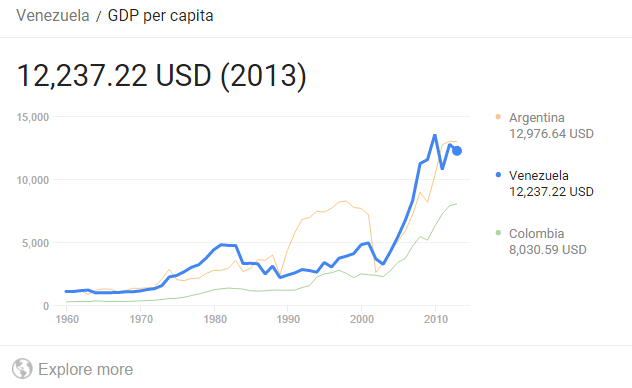Lefty rage gets all of the attention because they control the media Their endless tantrums about losing the 2016 election, as well as their increasingly shrill anti-white rhetoric, is flooding the zone. Lost in all of this is the collapse of neoconservatives into a squalor of vulgarity, dishonesty, and paranoia. Whatever it was, the political movement of Norman Podhoretz and Irving Kristol is now just bigoted rage-heads. This Noah Rothman column is a good example.
The word “ethics” appears prominently in the biographies of the authors who co-wrote a recent Washington Post op-ed lamenting the “taboo” associated with “talking about overpopulation.” Frances Kissling is the president of the Center for Health, Ethics, and Social Policy. Peter Singer is a professor of bioethics at Princeton University. Only Jotham Musinguzi, the “director general of Uganda’s National Population Council,” doesn’t mention “ethics” in the bio. That’s good because the Malthusian views promulgated in the piece are anything but ethical.
[snip]
Because population control is not a problem in the developed world, where birthrates are declining below even replacement rates, population controllers tend to fixate on sexual habits in the developing world. The authors of this op-ed are no exception. They draw an almost always fallacious straight-line projection to conclude that—in the unlikely event that nothing changes between today and 2100—a population crisis should afflict a variety of Sub-Saharan African nations. To avert this crisis, they advocate promoting and supporting proper sexual hygiene, to which almost no one would object. But their authors’ core agenda isn’t the distribution of prophylactics. They seek to de-stigmatize abortion in the equatorial world, which is controversial for reasons that have nothing to do with faith. After all, it was The Population Bomb and its progenitors that lent renewed legitimacy to old arguments that inevitably result in targeting black and brown populations with sterilization and eugenics.
This is the default approach for Rothman and most of the neocon tribe. Instead of simply disagreeing with someone, they first paint the person as immoral, beyond the pale and therefore fair game for whatever accusation they can conjure. Before offering any evidence, Rothman strongly implies the authors of the Washington Post article are unethical people. He never backs this up with evidence. The fact that he does not like or understand their argument is enough for him to slime the authors.
If you read the WaPo article, you’ll see that it is a good faith effort to talk about the population explosion in Africa. They blame Paul Ehrlich for discrediting the topic of population growth, because they are forbidden to discuss the real issue. To talk about the world’s most important graph, is to risk being called a racist by slime merchants like Noah Rothman, so they dance around it. The piece is actually fair and reasonable, given that it appears the Washington Post.
Now, Rothman is a stupid person, so it is no surprise that he is wildly ignorant of Malthus and population issues. Stupid may be the wrong word. Ignorant is a better word, as he makes to no effort to know about these things. He’s too busy claiming everyone who disagrees with him is immoral. His game is to attack and then cry out in pain when the other side mounts a defense. His likes to paint himself as the moral actor, forced to do horrible things to his enemies.
He is also a serial liar. He smears people all the time and then lies to their face about what he wrote. This classic Tucker Carlson segment is a great example. Rothman lies in his column about something Carlson said. When confronted with it, he then lies about what he wrote. When his own words are read back to him, he changes the subject, only to start lying about what the Secretary of Defense said. When confronted on that, he starts lying about other stuff. Noah Rothman is incapable to telling the truth.
Again, whatever it was, neoconservatism is now just a death cult. It is a strange blend of Zionism and anti-majoritarianism, that lacks an intellectual core. The list of neocon thinkers is not exactly a glittering array of heavy weight intellectuals. Rothman is a smarmy twerp. John Podhoretz is a vulgarian. Max Boot appears to be struggling with mental illness. Bill Kristol is a bitter old fool. Jonah Goldberg is a frumpy dufus. It’s like a Jewish version of the Kennedy family, minus the homicides.
That gets to the heart of it. The Jewish century was powered by a generation of Jewish men who were smart, educated and embraced by a majority ruling class that had built the foundation of the American empire. Not only could neoconservatism only happen in America, it could only happen in Cold War America. Today’s America is a different place and today’s neocons are a collection of feckless heirs, playing make believe as they squander their inheritance. The term of art is reversion to the mean.
Just like the reckless kid with a trust fund, the neocons have caused a lot of damage and continue to be a menace. Their efforts to undermine Trump’s Korea initiative and their efforts to entangle us in the Syrian civil war are two obvious examples. The fact that the New York Times and Washington Post are festooned with these loons, means they will pollute public discourse for a while longer. The good news is that guys like Noah Rothman are the future of the movement, which means it has no future.

